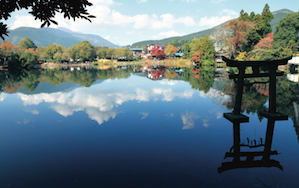Pivotal moment
A pivotal moment in the UK for shochu was the opening of Zuma’s sister restaurant Roka and its downstairs bar Shochu Lounge. Conceptually devised by author, bartender and drinks pseudo-scientist Tony Conigliaro, the menu offers large jars and glasses of infused shochu (peach, jasmine, cherry, plum, coffee and strawberry are all on offer), cocktails such as shochu, cucumber and sake and experimental libations such as Roka Sangria.
Some believe shochu has a future outside of Japanese-themed bars and restaurants. Hisanori Tengeiji of the Oenon group, which owns Hakata No Hana, Big Man and Mugi Zakari, says schochu’s international success hinges on its low abv. “Usually, the alcohol degree of shochu products is 20% or 25% by volume. It is lower than whisky or brandy. Therefore, it must be better for consumers who are concerned about their health.”
Tony Conigliaro doubts the spirit can ever thrive outside of its traditional setting. “The big barrier is that shochu is so cultural it stays within the realm of Japanese cuisine. The Japanese flavour palate is very different from ours – it is savoury and umami based. “There are then people that will feel cheated by the abv – and shochu is also very expensive.”
At Iichiko, an Otsurui style, but also the largest shcochu brand at 8.2 million 9-litre cases, the feeling is that shochu must adapt, not consumers.
“Iichiko’s characteristic is it can change the style for each customer. We don’t persist with the traditional Japanese style. Of course we will inform consumers about Shochu’s culture, history and traditional style, but we think the most important thing is to adapt Iichiko to each culture like the California Roll (a type of sushi).” Iichiko might not be on every Japanese menu, as the Californian Roll, but it now exports to 30 international countries, with the US and China its biggest markets.
Breakthrough potential
For Takara’s Ando, the breakthrough potential lies in Korui shochu, which he sees as competing with other neutral and mixable white spirits. The frosted bottle of Takara’s Japan brand is more of a nod to Grey Goose or Belvedere than traditional Japanese shochu. “Korui has the most potential – foreigners like the Japan bottle – it is very identifiable,” he says.
In the domestic market the general trend over recent years has been towards Otsurui shochu. “In general in Japan, people prefer to drink Otsurui because of the natural flavour of ingredients,” says Tetsuro Miyazak of Iichiko. “Also Japanese people believe Otsurui is good for health, has no sugar and doesn’t cause a hangover after drinking it. Korui is consumed for mixing with something, such as oolong-tea. In this case Japanese people don’t care about its taste.”
According to Oenon’s Tengeiji the trend towards Otsurui was arrested somewhat because of the downturn. “Many consumers have gone to the cheaper Korui shochu due to the economic recession,” he says. “However, since then Highball (whisky and soda) trend, the overall consumption of shochu is on a downward trend.”
Tengeiji’s observations are backed by Euromonitor International’s calculation that the category shrunk by 13% during 2007-2013 to 112 million 9-litre cases. So, with stagnation at home, exporting becomes less of a vanity project and more of a logical step. It’ll be a long wade into the mainstream, but a small trickle of sales in a number of markets could help to create momentum.
Just think, 20 years ago not a soul would have guessed Suntory could win Distillery of the Year twice in a row at the International Spirits Challenge. Without an established market for the spirit, shochu’s international challenge will be even stiffer.




